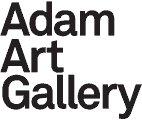Listening Stones Jumping Rocks / The Machine Stops

Listening Stones Jumping Rocks
The Machine Stops: The Allegorical Architectural Project
20 November 2021 – 27 March 2022
Summer closedown 18 December 2021 – 17 January 2022
Listening Stones Jumping Rocks
Curated by Susan Ballard and Sophie Thorn
With works by Len Lye, Peter Peryer, Phil Dadson, Shona Rapira-Davies, Paul Johns, Anne Noble, Rachel Shearer, Janine Randerson, Dane Mitchell, Sriwhana Spong, Raewyn Martyn, Alice Bonifant, Ngahuia Harrison and Sorawit Songsataya
A weather rock sits on a shelf in an empty bach with wooden games and mismatched sets of playing cards. It is stapled inside a dusty plastic envelope with a typewritten piece of paper. A listening stone is placed in the hand of a child. It is told secrets and filled with worries, until it is no longer useful—a coping mechanism past its use by date.
Recent years have witnessed new responses from artists and curators to the uneven experience of living in the Anthropocene. Some artists are re-connecting environments with sensations, others create speculative objects with lives beyond the gallery. Natural histories and human histories are converging, and art is once again taking a central role. Listening Stones Jumping Rocks extends these narratives of mourning and hope to the scale of the cosmos.
Listening Stones Jumping Rocks draws together items from the Victoria University of Wellington Art Collection with key loaned works to offer a re-examination of the boundaries between human and nonhuman, life and living, speculation and imagination. The artists gathered represent a timeline of engagements with the environment. They mourn the sixth great extinction. They ask us to bear witness. They combine ritual with research. They speak back. They remind us of our relationship with both materials and whenua. They turn to the planet. From Len Lye’s chance clap that echoes across millennia to Sorawit Songsataya’s feathered gathering of grief, these works raise questions about what might be seen and heard amidst the material ecologies of the Anthropocene.
Listening Stones Jumping Rocks is curated by Susan Ballard and Sophie Thorn. The exhibition is presented to coincide with the first conference of the Association for the Study of Literature, Environment and Culture (Australia and New Zealand) to be held in Aotearoa: Ngā tohu o te huarere: Conversations beyond human scales. This conference, which is hosted by Te Herenga Waka’s Art History and English programmes and the Centre for Science in Society, will be held between 23 and 26 November 2021.
Susan Ballard is an art writer working in the intersections of art history, critical nonfiction, and the environmental humanities. She has written essays for October, Environmental Humanities, Reading Room, The Anthropocene Review, Sydney Review of Books, Griffith Review, ArtLink, and Eyeline, amongst many others. Her books include Alliances in the Anthropocene: Fire, Plants and People (with geographer Christine Eriksen, Palgrave Pivot, 2020), and 100 Atmospheres: Studies in Scale and Wonder (with the MECO network, Open Humanities Press, 2019). Her latest book is Art and Nature in the Anthropocene: Planetary Aesthetics (Routledge, 2021). She often works in collaboration, from 2011 to 2020 she was director of MECO: the Material Ecologies research network at the University of Wollongong, Australia. She is Associate Professor of Art History Tāhuhu Kōrero Toi at Te Herenga Waka—Victoria University of Wellington, Aotearoa New Zealand. Susan is one of the conveners of Ngā tohu o te huarere: Conversations beyond human scales, the 8th ASLEC-ANZ Conference, Aotearoa 2021.
Sophie Thorn is the Collections Curator at Te Pātaka Toi Adam Art Gallery. She holds a Master of Arts in Art History and Theory from the University of Canterbury and a Diploma in Law and Collections Management through the London Institute of Art Law. She studied Heritage Materials Science through the Physical Sciences department at Te Herenga Waka-–Victoria University of Wellington and at the Chemical Institute of Technology in Prague, Czech Republic. She has held positions at the Canterbury Museum, Experience Wellington, and Te Manawa Museums Trust. She has been with Te Pātaka Toi Adam Art Gallery since 2014.
In the media
Arihia Latham, ‘Te Hīkoi Toi: Art of the Anthropocene’, 27 Nov 2021 on stuff.
Pip Adam, ‘Writing about alien objects, an imagination fed by art’. 2 Dec 2021 on stuff.
The Machine Stops: The Allegorical Architectural Project
An exhibition of architectural drawings curated by Daniel K. Brown
With works by Connor Aislabie, Hamish Beattie-Craven, Alice Charles, Adam Clark, William du Toit, Travis Hinchliff, Thomas Jackson, Jonathan Morrish, May Myo Min, Rory Patterson, Michael Weir, Ryan Western, and Nicholas Wilkey
The Machine Stops features a selection of drawings and models by thirteen graduate students and alumni of Te Kura Waihanga Wellington School of Architecture at Te Herenga Waka—Victoria University of Wellington. These were all generated through the ‘Narrative Architecture’ stream of the Master of Architecture programme initiated by Daniel K. Brown, Professor of Design Studio. Brown set his students the challenge of developing architectural representations that are generated by bringing narratives from oral, visual and literary traditions together with actual and imagined sites to produce what he calls an ‘allegorical architecture’.
The Allegorical Architectural Project draws on environmental, societal and cultural tales by a range of artists and authors – from E.M. Forster to Italo Calvino, Haruki Murakami, Māori cultural narratives, Burmese superstitions, and more – to connect with and represent aspects of the natural and built heritage of Aotearoa. These drawings and models invite us to consider how tragic stories and scarred sites can be remembered as important lessons for future generations. As Brown puts it:
Tales of environmental devastation are visible to all of us. Cataclysmic events from centuries ago remain as permanent scars upon the landscape; culverted streams remain forever visible as open wounds upon the land. As James Joyce wrote in the margins of his novel Ulysses, ‘places remember events’. A tree branch cracking in the wind, fragments of stone tumbling down a hillside – the natural environment calls out its tale in whispers and whimpering groans, its unique form of storytelling audible to us all. We have only to pause and listen.
The resulting architectural representations are a form of temporal and spatial imagining. They address issues of cultural loss and environmental degradation at the same time proposing speculative means of rejuvenation and remembrance. Demonstrating great inventiveness and remarkable technical skill, The Machine Stops proves the power and utility of visual story-telling as we grapple with the detrimental effects of environmental devastation and envisage new ways of living in this place.
In August 2021, Brown’s Allegorical Architecture Project featuring seven of his students’ work was selected for a special edition of AD [Architectural Design]: Emerging Talents/Training Architects. Edited by Neil Spiller, the publication set out to explore new initiatives in architectural education, including pedagogical strategies that mix the virtual and the actual. Student work from twelve ‘forward-looking architecture schools worldwide’ was identified and introduced by their teachers and applauded by AD for ‘pushing the envelope of architecture in extraordinary ways’.
Daniel K. Brown is Professor of Design Studio in the Wellington School of Architecture Te Kura Waihanga at Te Herenga Waka—Victoria University of Wellington. He completed a Master of Architecture degree at Yale University in 1982 and thereafter embarked on a 14-year professional career as a registered architect, culminating in his role as Vice-President of leading New York architectural firm Emilio Ambasz and Associates. He took up an academic position at Victoria University of Wellington in 1998 where he plays a full and active role in academic life. Brown has received 12 teaching awards and ten research fellowships including the American Fulbright Fellowship. In 2010 a five year retrospective of his architectural research was presented at the Venice Architecture Biennale.
The Machine Stops has been generously supported by the Faculties of Science, Health, Engineering, Architect and Design Innovation, Te Herenga Waka—Victoria University of Wellington.
A digitised viewing of the works in The Machine Stops here.
Media release pdf
Public programme here
























































